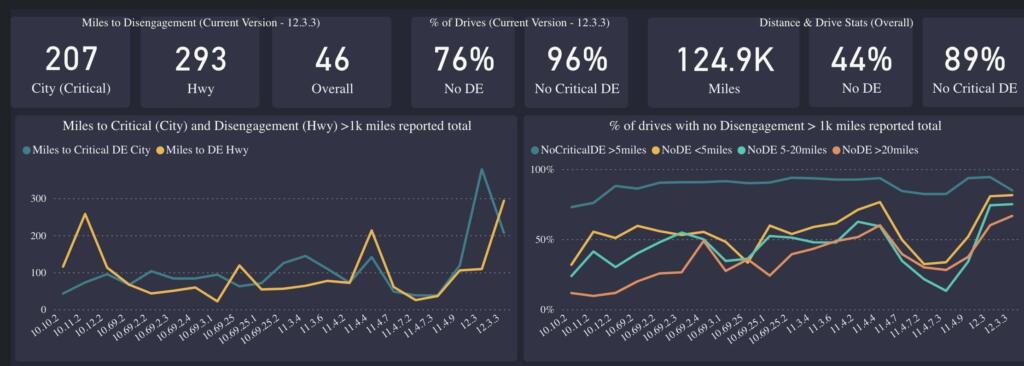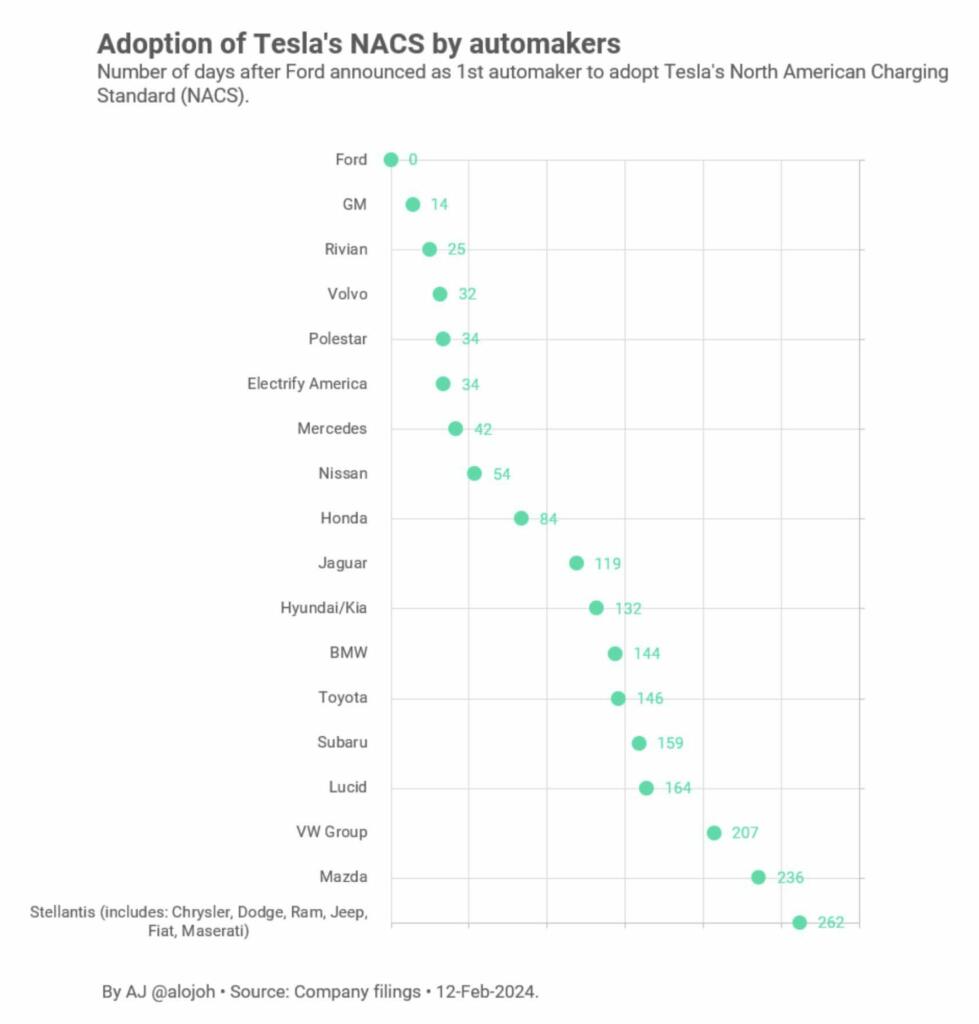Tesla FSD is improving rapidly with FSD 12.3.X going to all Tesla buyers in the North America. FSD 12.4 should be out this month and it is reported to be substantially better. There were reports two weeks ago from some Tesla engineers who believed that FSD would reach robotaxi level by July 2024.
There was a 3X gain in miles to disengagement for version 12.3 over all previous versions.
IF there is 3X gains in miles to disengagement for FSD versions 12.4, 12.5 and 12.6 and each major version is released on a monthly basis then it would be about 12,000 miles to disengagement. Waymo only operates in limited hypermapped areas using LIDAR sensors has 17000 miles to disengagement.

This would be a rapid transition for FSD to Level 3 and Level 4 autonomous driving.
Who would be the companies that would license or partner with Tesla for Level 4 FSD?
The global carmakers would want to license a working level 4 autonomous driving system. Their self driving systems are not near making the leap to autonomous driving. Their driver assists systems only work on highways some of the time. They would be able to double their profits by selling a level 4 system at $12000 with 10-20% take rates.
Ford could be first in the USA but BYD and Chinese carmakers could move quickly if the Tesla FSD system is working well in China.
Uber and other companies with large car and truck fleets would increase commitments and deals with Tesla.
Here is how quickly the north american car companies all chose to license the Tesla charging network after Ford made the first deal.
Tesla would make as much or more profit per car for every car that has FSD. 20% of global new cars with FSD would be equal to 16 million additional cars per year of profit.

And we will license the tech to other car companies
— Elon Musk (@elonmusk) April 3, 2024
"And we will license the tech to other car companies" – Elon Musk
Here's how I'm thinking about it…
Let's assume the two parties are Ford and Tesla.
If I'm Ford: I want my customers to use FSD because it helps me sell more vehicles and helps my customers see the Ford… https://t.co/dfClbxhCjh
— Cern Basher (@CernBasher) April 3, 2024
$TSLA
The most famous Tesla analyst in S.korea (@KimJoonSung) shared his story of his informal meeting with Tesla."The direction of Tesla is clear with FSD and Optimus, and we expect it to succeed by around July this year," he said.
In other words, Tesla is preparing driving… https://t.co/qZdWIQzRog pic.twitter.com/XXz2o5TbwK
— Tsla Chan (@Tslachan) March 20, 2024

Brian Wang is a Futurist Thought Leader and a popular Science blogger with 1 million readers per month. His blog Nextbigfuture.com is ranked #1 Science News Blog. It covers many disruptive technology and trends including Space, Robotics, Artificial Intelligence, Medicine, Anti-aging Biotechnology, and Nanotechnology.
Known for identifying cutting edge technologies, he is currently a Co-Founder of a startup and fundraiser for high potential early-stage companies. He is the Head of Research for Allocations for deep technology investments and an Angel Investor at Space Angels.
A frequent speaker at corporations, he has been a TEDx speaker, a Singularity University speaker and guest at numerous interviews for radio and podcasts. He is open to public speaking and advising engagements.


Licensing FSD is nothing like licensing Microsoft Office or even seats of SAP.
There is a massive difference in architecture between Tesla and everyone else.
Tesla has one main computer that has something like 14 parallel processor cores, several GPU’s and at least two NNP – neural net processors.
Tesla processes everything on that computer and sends the signals to every device in the car. This means things like the voltage regulators for batteries, all of the battery diagnostics. 1000 radian speed regulators for the motors with inner current regulation; brake control regulators, position regulators, etc and all they do is send out final signals to the end device. I could list dozens of these complex regulators that are running on that computer.
Legacy automakers still source more than 80% of parts and modules and controllers from Tier 1-5 suppliers – who have the control regulators for their devices embedded in those modules, with firmware that they have written in those modules. That is why they cannot do over the air updates or any updates without bringing the car back to the shop.
So how is a neural net, single computer that bypasses all of those modules and talks directly devices with the variable or end logic going to work? They are going to have to buy the computer from Tesla or build one like it, and then see that they are going to have to source more stuff from Tesla, or rewrite the FSD to work with their motors, their inverter drives, their charging systems, etc.
Any OEM that wants to adopt it is in for a LONG process. The only ones that seem to get it at this point MIGHT be Ford at their skunkworks, MAYBE Hyundai, and maybe Mercedes and BMW who seem to be redoing their architecture towards “computer on wheels”.
You commentors clearly havent been in a Tesla with the latest upgrades. I’m basically a passenger in my car now. Drives me everywhere, everyday. Incredible technology. All from a car I bought in 2018.
My disengagements/interventions are at least 1 per 5 miles (Tesla M3 FDS V12.3.2.1). Good progress but far from L4/5. Twice yesterday it disengaged on a freeway on-ramp and left me driving on the shoulder!
Tesla FSD will continue failing at making reasonable driving behavior simply because it doesn’t have reason and awareness. Reason and awareness cannot be generated by algorithms but only by the universe. As I said here many years ago there’s nothing special about Tesla Technology and it can easily be adapted by other companies. The Tesla business model is falling apart and rightly so. The delusionals Keep investing in Tesla not because of its a briliant business model but because of their blind worship of a flesh and blood man. They are paying a price for it and learning a lesson. and rightly so
It’s human reason and awareness that causes a vast majority of crashes , the amount of times I’ve seen people crash trying to merge in turn 2 lanes into 1 and they crash because one doesn’t want to let the other in , there are many examples of these types of crashes which self driving cars would avoid so simply because they don’t have human instincts , such as arrogance, selfishness, self importance etc . No one expects self driving cars to be 100% safe but then no one expects humans behind the wheel to never make a mistake either otherwise no one would be allowed to drive .
When Tesla ditched radar, they took a giant step back and removed 1 layer of security.
If this improvements are just smart marketing or something real we will see in less half a year.
This is a fantasy.
Well, let’s see what insurance companies want. If FSD becomes significantly better than humans, then the pressure on regulators gets ramped up.
Politicians will be offered campaign money from insurance companies. Politicians will then put pressure on regulators to accept FSD.
Follow the money, ignore the luddites…
Sorry to burst your bubble but regulators are deciding which level it is, not tesla engineers or fanboys. The truth is it is at level 2 right now, and since at least 2018. I don’t see it magically upgrade to level 4 in mere weeks or months.
For a system to reach Level Three autonomy, it needs to have a baked-in redundancy in the event that the main system fails. This redundancy allows for the “eyes-off” approach. In a Tesla the redundancy at the moment is the driver. In order for an automated system to move away from Level Two, there would need to be a sensory backup, that can provide backup to the camera.